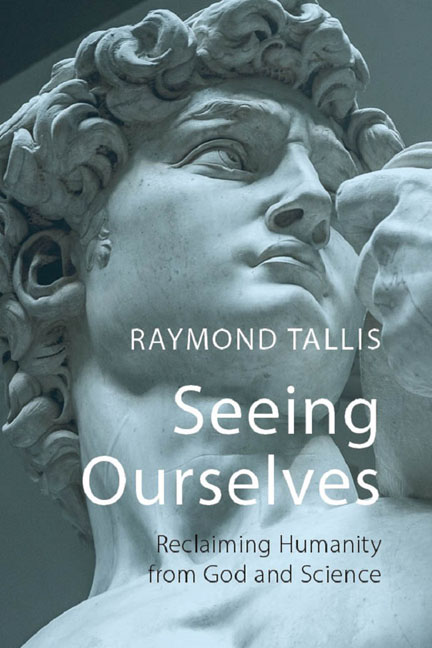Addendum Ambodiment: the I and the it
Published online by Cambridge University Press: 09 August 2023
Summary
There is a deep mystery around the relationship between the first-person who am and the third-person or no-person of the body that is. While ambodiment is the ultimate embrace, and RT is the body that is pointed out when he is pointed out, and they are inseparable – as inseparable, as I have suggested, as the recto and verso of a sheet of paper – there nevertheless remains a distance between RT and his body. It is time to return to where we began: the fundamental tension at the heart of embodiment and what we may call the difficulty of getting an “I am” out of an “it is”.
Some readers may detect the echo of a philosophical problem, first put into circulation by David Hume in his Treatise of Human Nature, of deriving an “ought” from an “is”: “The distinction of vice and virtue is not founded merely on the relations between objects; nor is perceived by reason”. There is nothing in the material world, in nature, that seems capable of generating norms. Matter ain’t a normative stuff: pebbles, for example, do not deplore or applaud. I would like to suggest that the difficulty of getting “ought” out of “is” is an aspect of a wider challenge of finding a basis for mattering in matter. And this is in turn a surface manifestation of the difficulty of finding an “am” in an “is”; or getting an “I” out of an “it”; or “I am” out of “it is”.
The difficulty is highlighted by the various complex quasi-external relationships between the “I” and the body that we discussed in this chapter: ownership, caring, using, suffering, and above all knowing. Of course, RT is represented to some extent in both places of the two-place relationship: the body I possess, care for, use (as the immediate agent of my agency), suffer, and so on is my body. Nevertheless, the distance underlines the non- or incomplete identity between me and my body.
- Type
- Chapter
- Information
- Seeing OurselvesReclaiming Humanity from God and Science, pp. 103 - 114Publisher: Agenda PublishingPrint publication year: 2019



